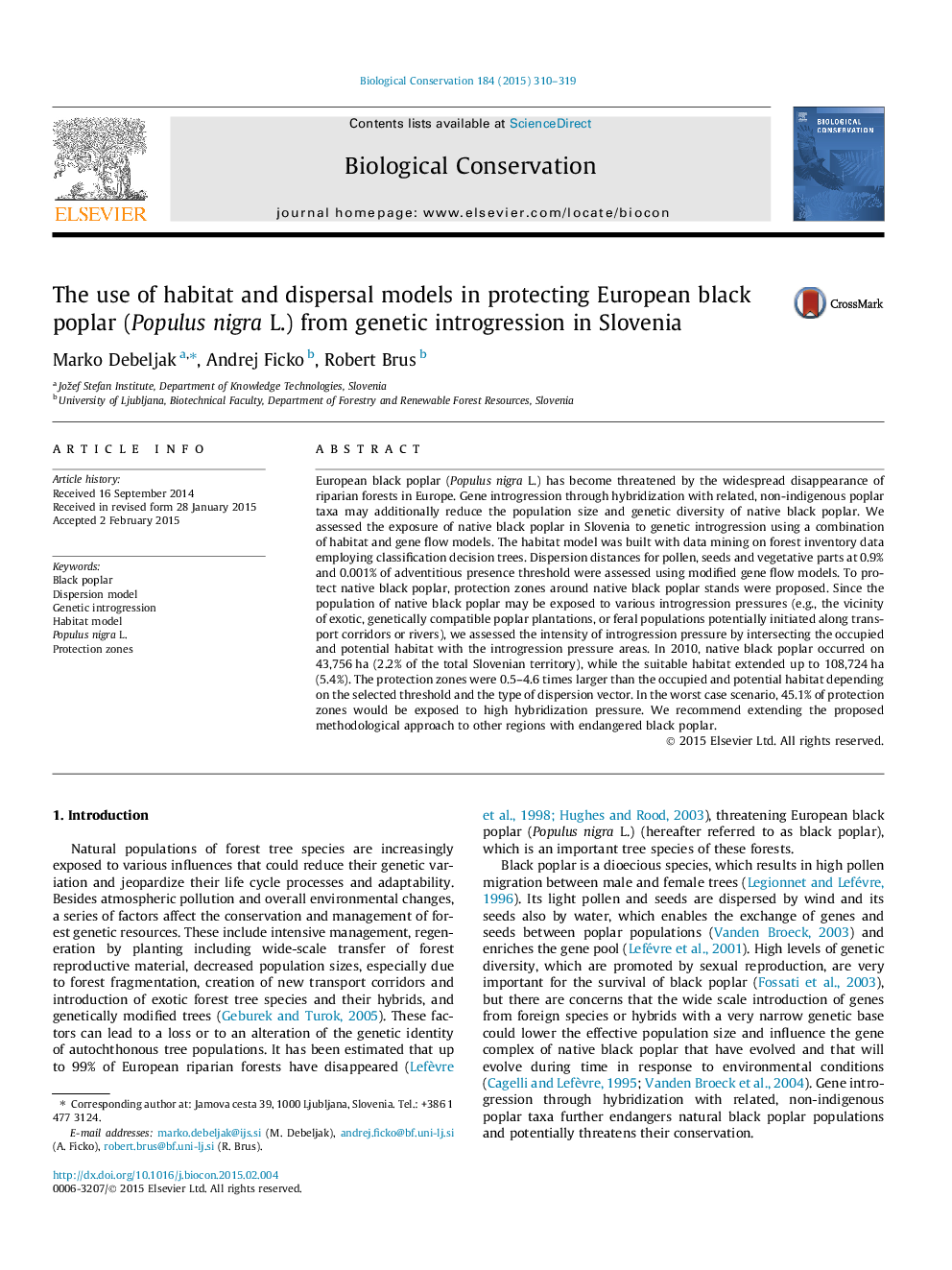| Article ID | Journal | Published Year | Pages | File Type |
|---|---|---|---|---|
| 6300069 | Biological Conservation | 2015 | 10 Pages |
Abstract
European black poplar (Populus nigra L.) has become threatened by the widespread disappearance of riparian forests in Europe. Gene introgression through hybridization with related, non-indigenous poplar taxa may additionally reduce the population size and genetic diversity of native black poplar. We assessed the exposure of native black poplar in Slovenia to genetic introgression using a combination of habitat and gene flow models. The habitat model was built with data mining on forest inventory data employing classification decision trees. Dispersion distances for pollen, seeds and vegetative parts at 0.9% and 0.001% of adventitious presence threshold were assessed using modified gene flow models. To protect native black poplar, protection zones around native black poplar stands were proposed. Since the population of native black poplar may be exposed to various introgression pressures (e.g., the vicinity of exotic, genetically compatible poplar plantations, or feral populations potentially initiated along transport corridors or rivers), we assessed the intensity of introgression pressure by intersecting the occupied and potential habitat with the introgression pressure areas. In 2010, native black poplar occurred on 43,756Â ha (2.2% of the total Slovenian territory), while the suitable habitat extended up to 108,724Â ha (5.4%). The protection zones were 0.5-4.6 times larger than the occupied and potential habitat depending on the selected threshold and the type of dispersion vector. In the worst case scenario, 45.1% of protection zones would be exposed to high hybridization pressure. We recommend extending the proposed methodological approach to other regions with endangered black poplar.
Related Topics
Life Sciences
Agricultural and Biological Sciences
Ecology, Evolution, Behavior and Systematics
Authors
Marko Debeljak, Andrej Ficko, Robert Brus,
